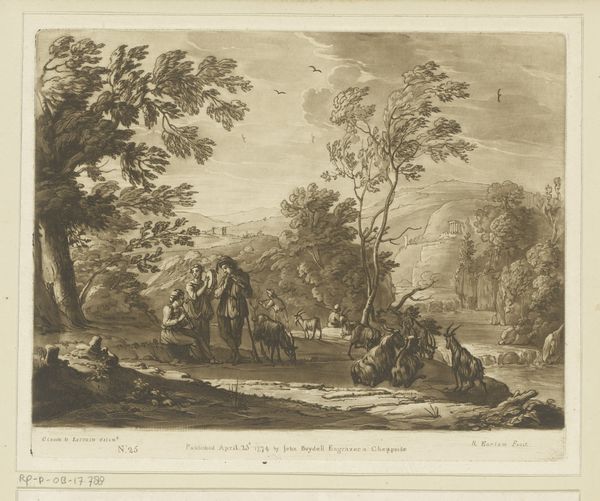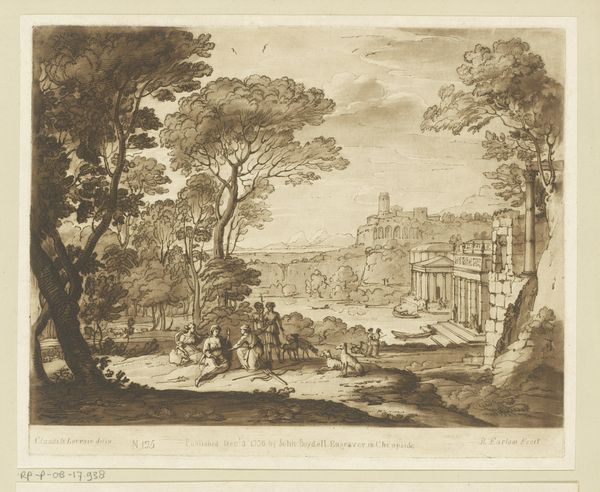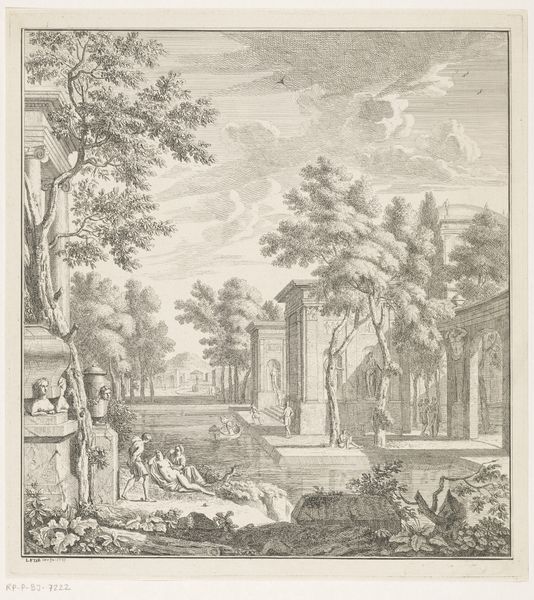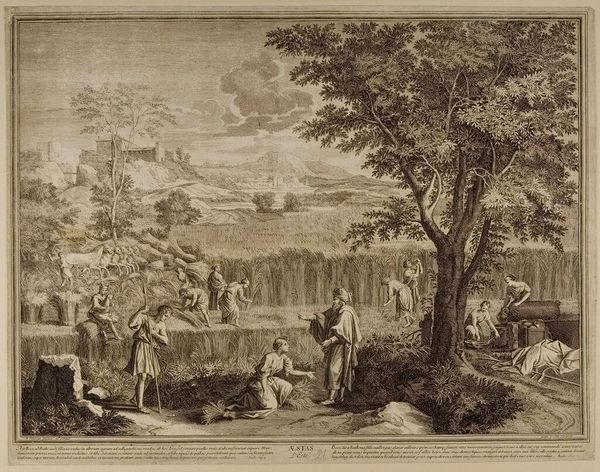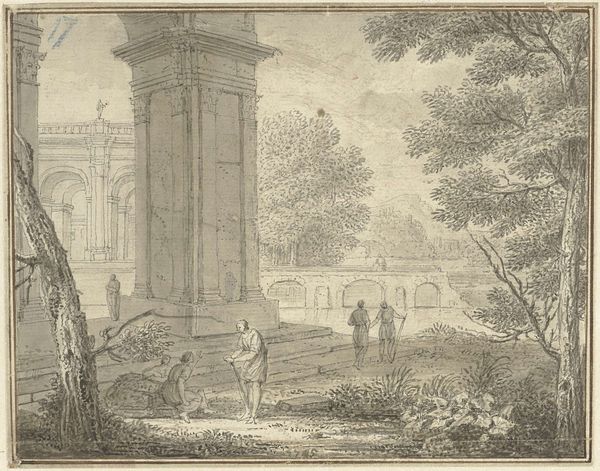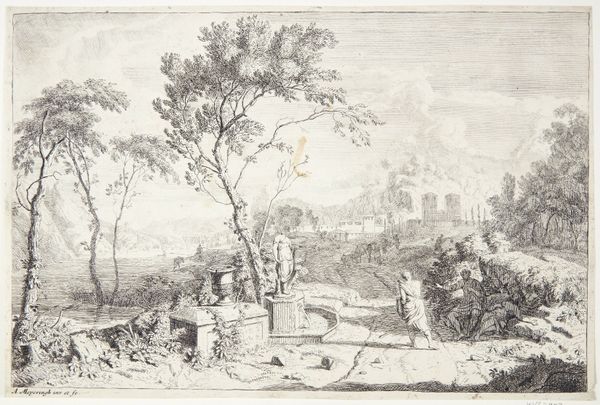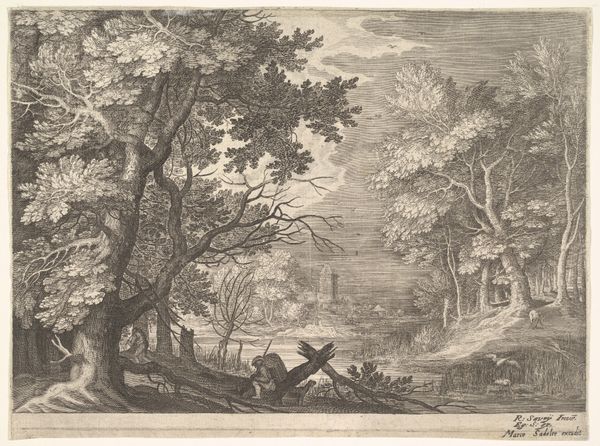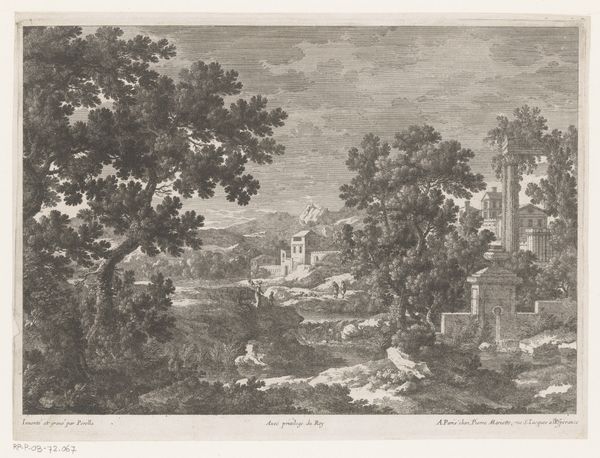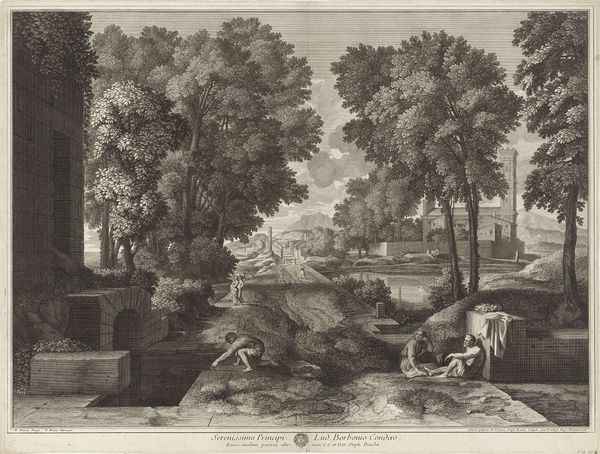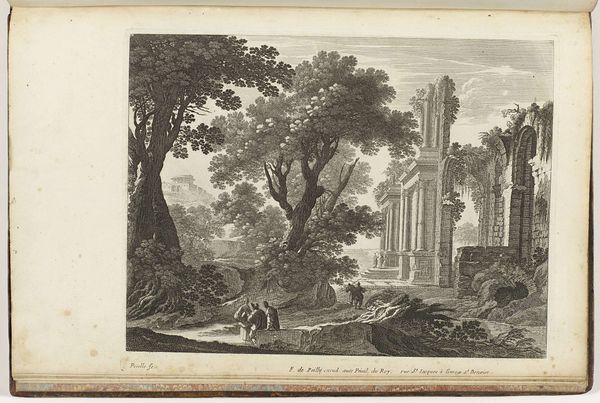
print, etching
#
statue
#
allegory
#
baroque
#
pen drawing
# print
#
etching
#
landscape
#
classical-realism
#
figuration
#
cityscape
#
history-painting
Dimensions: height 255 mm, width 332 mm
Copyright: Rijks Museum: Open Domain
Editor: So, this is "Landschap met ruïnes en figuren," a print – etching and pen drawing – by Isaac de Moucheron, created sometime between 1677 and 1744. It feels… almost theatrical, with that ruined arch and the figures arranged like a scene on a stage. How do you interpret this work? Curator: The ruins are very important, aren't they? De Moucheron uses these fragments of the past—the crumbled arch, the scattered stones, the statue—as powerful symbols of cultural memory. Ask yourself, what did the ruined architecture mean to viewers in the 18th century? Editor: A reminder of the transience of power, maybe? The inevitable decay of even the greatest empires? Curator: Precisely! But consider too the figures amidst the ruins. They're not simply observing the decay; they're engaging with it. The artist is suggesting that even amidst ruin, life, art, and human connection endure. The allegorical figures gesture toward a lost history that they attempt to keep alive through gesture, pose, costume, and action. What of the landscape? Editor: It’s like the landscape is reclaiming what was once built, and that classical-realist approach lends this image a timeless appeal. Curator: Yes, and notice the placement of the figures near a source of fire. The warmth suggests resilience, suggesting that society is trying to recreate itself or protect itself from an element. The enduring human spirit is also on display within this piece! How interesting. Editor: I never considered all the potential connotations within each symbol; that opens up new interpretive avenues. It is almost like a puzzle of a history. Curator: And isn't that the beautiful thing about art? We can use these old-world images and their context to reimagine historical scenes and what the people truly went through!
Comments
No comments
Be the first to comment and join the conversation on the ultimate creative platform.


